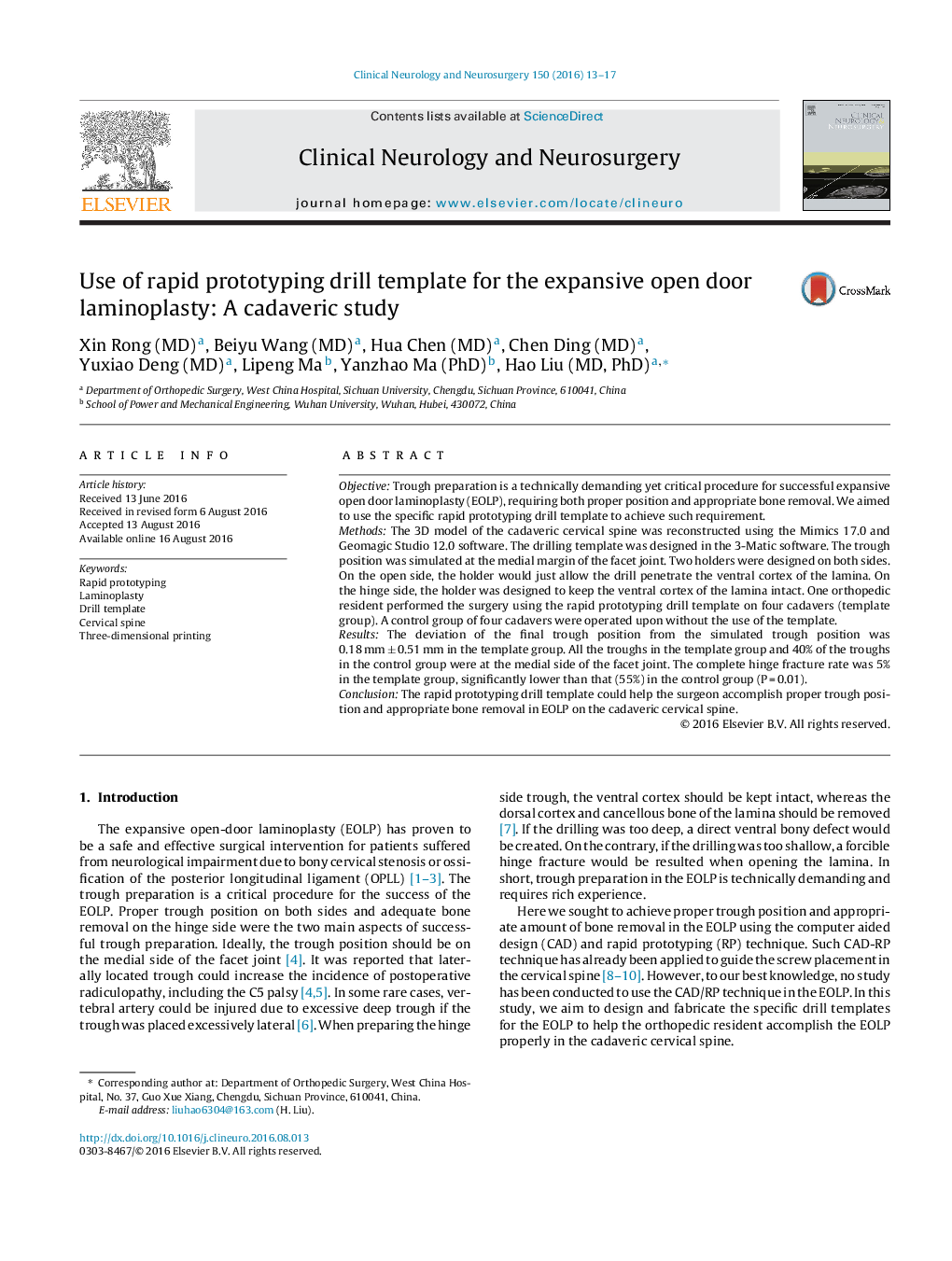| Article ID | Journal | Published Year | Pages | File Type |
|---|---|---|---|---|
| 3039425 | Clinical Neurology and Neurosurgery | 2016 | 5 Pages |
•The 3D printed drill template for EOLP was successfully fabricated and applied.•The drill template could help achieve better trough preparation during EOLP.•The drill template could shorten the learning curve of performing the EOLP.
ObjectiveTrough preparation is a technically demanding yet critical procedure for successful expansive open door laminoplasty (EOLP), requiring both proper position and appropriate bone removal. We aimed to use the specific rapid prototyping drill template to achieve such requirement.MethodsThe 3D model of the cadaveric cervical spine was reconstructed using the Mimics 17.0 and Geomagic Studio 12.0 software. The drilling template was designed in the 3-Matic software. The trough position was simulated at the medial margin of the facet joint. Two holders were designed on both sides. On the open side, the holder would just allow the drill penetrate the ventral cortex of the lamina. On the hinge side, the holder was designed to keep the ventral cortex of the lamina intact. One orthopedic resident performed the surgery using the rapid prototyping drill template on four cadavers (template group). A control group of four cadavers were operated upon without the use of the template.ResultsThe deviation of the final trough position from the simulated trough position was 0.18 mm ± 0.51 mm in the template group. All the troughs in the template group and 40% of the troughs in the control group were at the medial side of the facet joint. The complete hinge fracture rate was 5% in the template group, significantly lower than that (55%) in the control group (P = 0.01).ConclusionThe rapid prototyping drill template could help the surgeon accomplish proper trough position and appropriate bone removal in EOLP on the cadaveric cervical spine.
